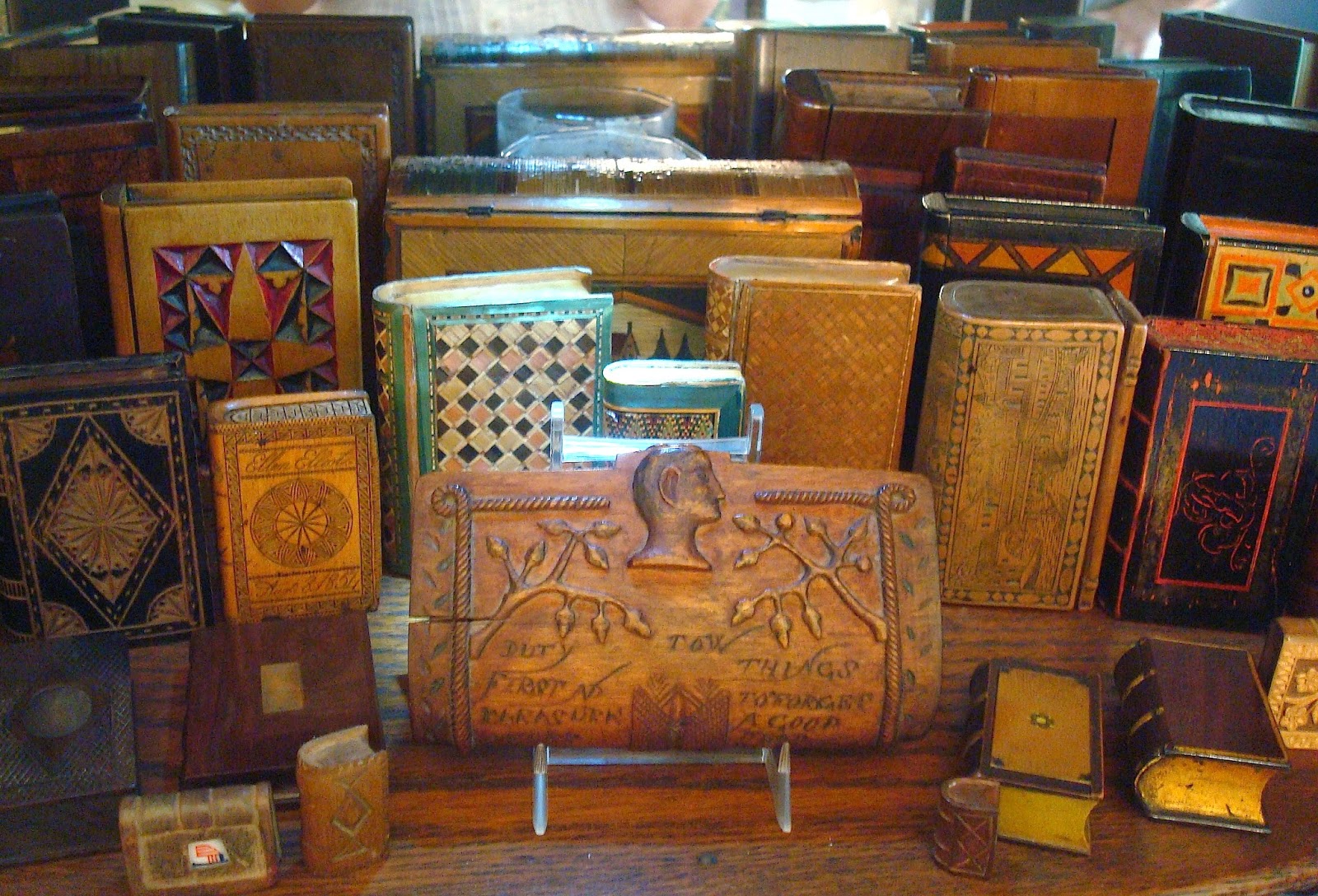 |
| Stone book carved in the Eastlake Style |
Notes on Stone Books from Ian Berke
 So few people collect (much less know about) stone books. I've been collecting them for about 15 years and have nearly 300. I am trying to write an article for MAD (Maine Antique Digest), and am doing a statistical analysis of the books (i.e. percentage with female names vs. male names, dates, iconography, inscriptions, etc.). There are generally two types of books: tourist/souvenir books and personal books. Although I have a number of tourist books (Garden of the Gods, etc), the personal books are far more interesting. My feeling is that most were done as after hours work by stone cutters as gifts for friends and lovers. They tend to be much more skillfully done, but there are also those that are charmingly folky. Clearly done by those with no stone cutting skills. The use of the closed book seems to me to be a reference to the Bible, which was important to 19th & early 20th century Americans in a way that is difficult to appreciate today. Many books have explicit religious iconography or inscriptions (Holy Bible, crosses, anchors, crowns, etc) but most do not. Some are clearly memorials, and may have tintypes (or later photos) set into the cover.
So few people collect (much less know about) stone books. I've been collecting them for about 15 years and have nearly 300. I am trying to write an article for MAD (Maine Antique Digest), and am doing a statistical analysis of the books (i.e. percentage with female names vs. male names, dates, iconography, inscriptions, etc.). There are generally two types of books: tourist/souvenir books and personal books. Although I have a number of tourist books (Garden of the Gods, etc), the personal books are far more interesting. My feeling is that most were done as after hours work by stone cutters as gifts for friends and lovers. They tend to be much more skillfully done, but there are also those that are charmingly folky. Clearly done by those with no stone cutting skills. The use of the closed book seems to me to be a reference to the Bible, which was important to 19th & early 20th century Americans in a way that is difficult to appreciate today. Many books have explicit religious iconography or inscriptions (Holy Bible, crosses, anchors, crowns, etc) but most do not. Some are clearly memorials, and may have tintypes (or later photos) set into the cover. |
| A marble book made in the form of an album. Many book objects from the latter 19th century are made to emulate photograph albums. |
Provenance is something that has driven me crazy. I had expected to find many with accompanying documentation saying "my grandfather carved this in 1885, etc, but in fact once the book has left the family, nearly always any record of ownership disappears. A very very few (3 out of 300) state "made by _____" but they are rare. Most books are carved from marble, siltstone, limestone, slate (rare), and other sedimentary rocks. Marble obviously a metamorphic rock. Harder stones, such as granites and diorites are rare presumably because it was much more difficult to carve. Agate, which is quite hard (Mohs 7), is usually restricted to very small books. Alabaster and catlinite (pipestone) is also seen. Catlinite more for tourist books from Minnesota. Italian books are immediately recognizable by the use of different highly ornamental marbles carefully fitted together.
 |
| This marble, delicately carved and gilt book features a portrait of Harry. Folk art book objects often feature photos of the giver or receiver of a gift or memorial blook. |
There are also prison books, done by inmates, most from the Iowa State Penitentiary in Anamosa. I have 3 or 4 really good ones. Stone books are getting harder to find, especially the ones with inscriptions. I am particularly interested in dated books, which show that most were made from about 1870 through 1910. My earliest is 1857 and the latest 1937, but those are real outliers. I go on forever.
Ian Berke
And a few more of Ian's stone books photographed on a background of one inch blocks, for scale:
 |
| Heart, hand and pencil in relief; a powerful image of love |
 |
| Mizpah books are memorials |
 |
| A beautiful and sentimental gift book |
 |
| Another version of a faux album, is it Masonic? |
Joey sent a comment on the Heckman collection post that leads us to a blogpost on another stone book: http://anonymousworks.blogspot.com/2014/03/19th-century-folk-art-carved-odd.html
UPDATE: There is a new article (April 2015) out on Ian's stone book collection in the Maine Antiques Digest.





.jpg)























